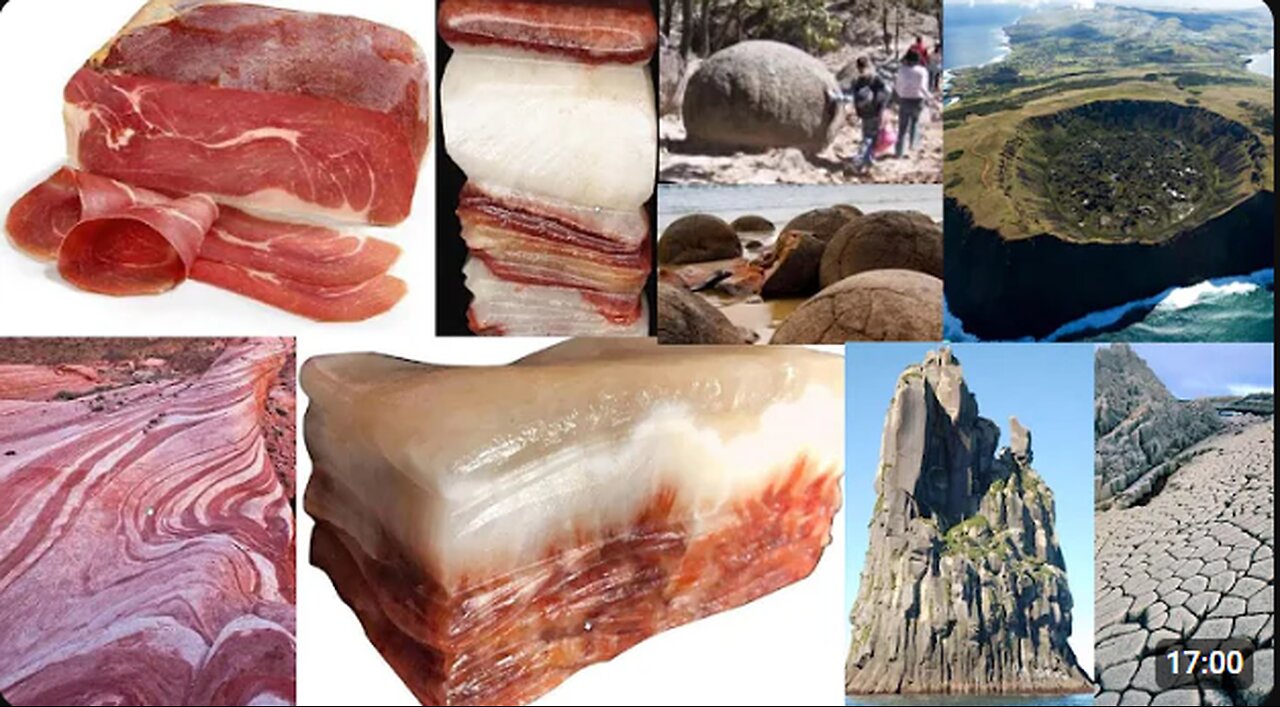Premium Only Content

What You Need To Know About PETRIFIED ANIMALS, TREES, AND GIANTS
Petrification, or fossilization, is the process by which organic material is gradually replaced by minerals, turning plants, animals, and other organisms into stone. Petrified animals and trees are fascinating remnants of ancient life that provide valuable insights into the Earth's history.
Petrified Trees
Petrified trees are the most common and well-known examples of petrified organisms. The process of petrification begins when a tree or plant is buried under sediment, such as volcanic ash or mud, shortly after its death. This burial prevents the decomposition of the organic material. Over time, groundwater rich in minerals like silica, calcite, or pyrite permeates the plant's tissues, slowly replacing the organic material with minerals. As the plant's cells are replaced, the tree's structure is preserved in exquisite detail, including the bark, growth rings, and even cellular structures.
The result is a fossilized tree that has turned to stone but retains the original shape, texture, and sometimes even the color of the wood. Some petrified wood exhibits stunning, multicolored patterns caused by different minerals.
Notable Petrified Forests:
Petrified Forest National Park (Arizona, USA): One of the most famous petrified forests, home to large petrified logs from the Late Triassic period, around 225 million years old.
Lesbos Petrified Forest (Greece): A UNESCO Global Geopark, this site contains fossilized trees dating back 20 million years, some of which are still standing upright.
Ginkgo Petrified Forest (Washington, USA): This forest has a unique variety of petrified trees, including ancient ginkgoes and conifers.
Petrified Animals
While petrified trees are more common, petrified animals can also occur, although this process is rarer due to the more complex structure of animal tissues.
When an animal is quickly buried after death, for example by volcanic ash, sediment, or in an oxygen-poor environment, the same process of mineral replacement can occur. The organic tissues of the animal, such as bones, teeth, and sometimes even soft tissues, are gradually replaced by minerals like silica, calcite, or iron, preserving the animal in stone. In rare cases, details like muscle tissue, skin, or feathers may be fossilized if the conditions are just right.
-
 3:20
3:20
TOWERCLIPS
10 months agoGravity Energy Machine
1362 -
 59:43
59:43
Sarah Westall
4 hours agoVietnam Shuts down 86 Million Bank Accounts, The Fourth Turning & more w/ Andy Schectman
39.9K9 -
 1:17:51
1:17:51
Flyover Conservatives
11 hours agoMary Flynn O’Neill and Clay Clark: The Church Must Rise or America Falls | FOC Show
29.6K3 -
 LIVE
LIVE
I_Came_With_Fire_Podcast
13 hours agoThe Global ANTIFA Connection You've Never Heard Of | The Israel Question
440 watching -
 16:38
16:38
RTT: Guns & Gear
21 hours ago $2.13 earnedExtar EP9 Review: The Best Budget 9mm PCC?
33.7K6 -
 7:53
7:53
Rethinking the Dollar
14 hours agoMass Firings in Tech: The Real Agenda Behind 166,000 Cuts
44.6K10 -
 1:02:28
1:02:28
BonginoReport
8 hours agoFeds Monitor Threats Ahead of Kirk Memorial - Nightly Scroll w/ Hayley Caronia (Ep.138)
254K144 -
 55:51
55:51
Candace Show Podcast
7 hours agoWho Moved The Camera Right Above Charlie's Head? | Candace Ep 239
108K629 -
 13:09:13
13:09:13
LFA TV
1 day agoBREAKING NEWS ON LFA TV! | FRIDAY 9/19/25
260K55 -
 13:00:46
13:00:46
Total Horse Channel
17 hours ago2025 WDAA Western Dressage World Championship Show | Day Four | Arena One
21.9K